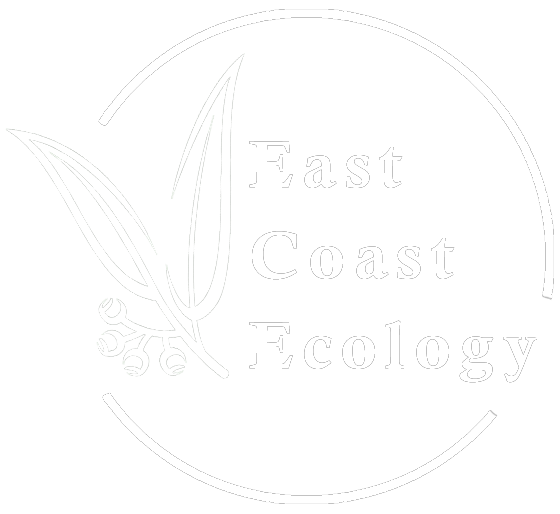Biodiversity Credits NSW – What Are They & Why Are They Important?
Biodiversity credits are, for many, a grey area that raises a myriad of important questions such as why, what, and how.
Broadly speaking, the concept is simple: biodiversity credits are simply a unit of measurement used in NSW’s Biodiversity Offsets Scheme (formerly the BioBanking Scheme) and provide a framework for offsetting unavoidable impacts on biodiversity that occur during development.
They are generated by landholders who manage their land to improve biodiversity and can be purchased by developers as a way to offset the impacts of their projects.
Over the years, NSW’s biodiversity offset scheme has been through a number of iterations and name changes, however, the core mission remains the same – to ensure that development does not have a net negative impact on biodiversity as development spills out into land occupied by threatened flora or fauna.
What is the Biodiversity Offsets Scheme?
In NSW, the Biodiversity Offsets Scheme (BOS) was established under the Biodiversity Conservation Act 2016 (NSW) which commenced on 25 August 2017 and replaced the voluntary biodiversity offset scheme known as BioBanking.
The key changes that occurred in the switch from the Biodiversity Offsets Scheme to BioBanking included:
Mandatory reporting: As you may expect, the voluntary reporting system of the BioBanking scheme was limited in its participation. While there were some developers that were keen to jump on the front foot, by and large, the program did not receive the widespread uptake that was hoped.
New reporting thresholds: Under the new Biodiversity Offsets Scheme, the reporting thresholds changed which meant that rules applied to all development and clearing approvals that were deemed likely to significantly affect threatened species or their habitat, or that exceed the Biodiversity Offsets Scheme threshold.
Rigorous assessment criteria: The NSW Biodiversity Offsets Scheme features a more rigorous assessment criteria that measures the permanent impact of the offset and the contribution of the offset that would be required to reach the objectives of the scheme. Previously, NSW’s BioBanking did not have the same formal assessment process in place.
Transparent, accountability framework: The BOS has a public register for biodiversity credits which allows developers and landholders to track the process of the scheme and ensure that it is delivering on its objectives.
As a rule of thumb, the shift from BioBanking to the Biodiversity Offsets Scheme was simply a changing of the guard aimed to make the programs enforceable and hold developers accountable.
What is a Biodiversity Stewardship Agreement?
A biodiversity stewardship agreement is a voluntary arrangement between the NSW Biodiversity Conservation Trust and a landholder that is designed to permanently protect and manage an area of land. With a biodiversity stewardship agreement in place, biodiversity credits may be generated and sold to developers.
Landholders who wish to apply for a biodiversity stewardship agreement must apply to the NSW Biodiversity Conservation Trust.
What are the Key Benefits of Biodiversity Credits?
At their core, biodiversity credits are designed to ensure that development does not have a net negative impact on the environment. That means that new works and developments that are likely to significantly affect threatened species or their habitat must purchase credits to offset their impact through this process.
In NSW, biodiversity offset credits are generated by landholders who have entered into the Biodiversity Stewardship Agreements (BSAs). BSAs are a long-term agreement between landholders and the NSW government that outline how a landholder will manage their land in order to improve biodiversity.
Some of the key benefits of this initiative include:
Protection for threatened native flora, fauna and ecological communities
Landholders are incentivised to manage their land to protect biodiversity interests
Biodiversity credits are used to fund valuable conversation initiatives
A credit system creates an accountable and transparent system whereby developers must offset their impacts.
Credits are an important way to track and plan for development works so that biodiversity is protected and restored as development work continues across the state.
Who Manages NSW’s Biodiversity Offsets Program?
Since its inception back in 2017, the program has been handled by the Biodiversity Conservation Trust. However, as of 27th July 2022, the management of the Biodiversity Stewardship Agreement application processes has been handled by the Department of Planning and Environment’s Credit Supply Taskforce. After this date, the program will no longer be handled by the NSW Biodiversity Conservation Trust.
The NSW Biodiversity Conservation Trust will continue to support landholders in the wake of these changes in the form of annual site visits and supporting the annual report process. For all intents and purposes, the way that the scheme operates will not change, however, it is important to be aware of this change.
Who Can Buy Biodiversity Credits?
Biodiversity credits are subject to regulation; however, the typical buyer would be a developer that is looking to offset the environmental impact of biodiversity. Buyers may come in the form of private companies or may be government bodies or philanthropic organisation that are using the credits to achieve desired conservation outcomes.
Offsetting the biodiversity impact of a development is complete once the credit obligation has been reached and the credits may be retired from the market. When the Total Fund Deposit has been paid off in its entirety, any additional sale of credits from a biodiversity stewardship site may be paid directly to the owner of the site.
Final Thoughts
Biodiversity credits help create and maintain a critical balance between necessary developmental projects and environmental preservation in New South Wales. This system allows for a sustainable relationship between developers and our environment.
You can also help ensure the sustainability of your development project by organising a Biodiversity Development Assessment Report or consulting ecological services to make informed decisions about whether you’ll need to purchase biodiversity credits for your project, and how to distribute and utilise them in a way that contributes to sustainable practices.




